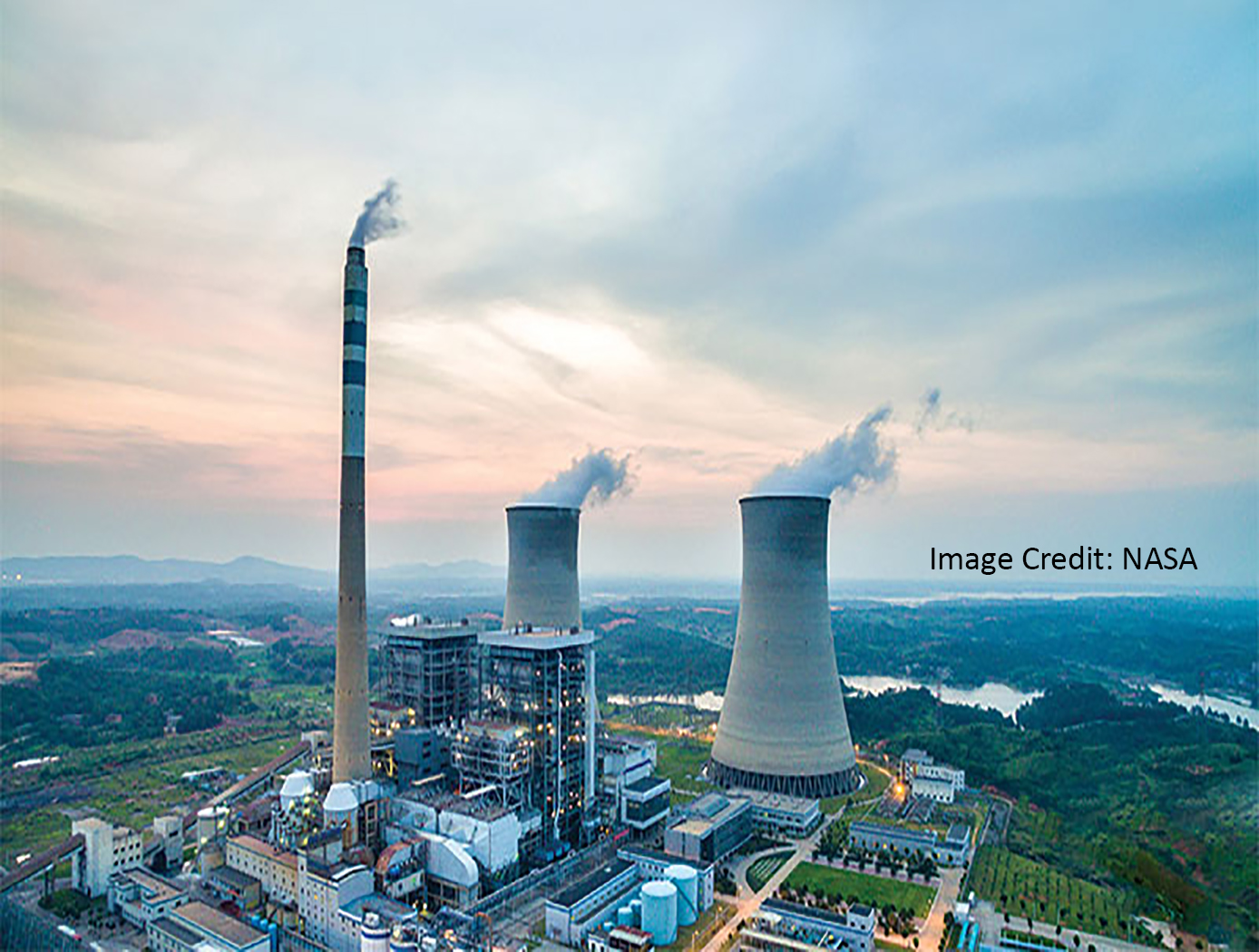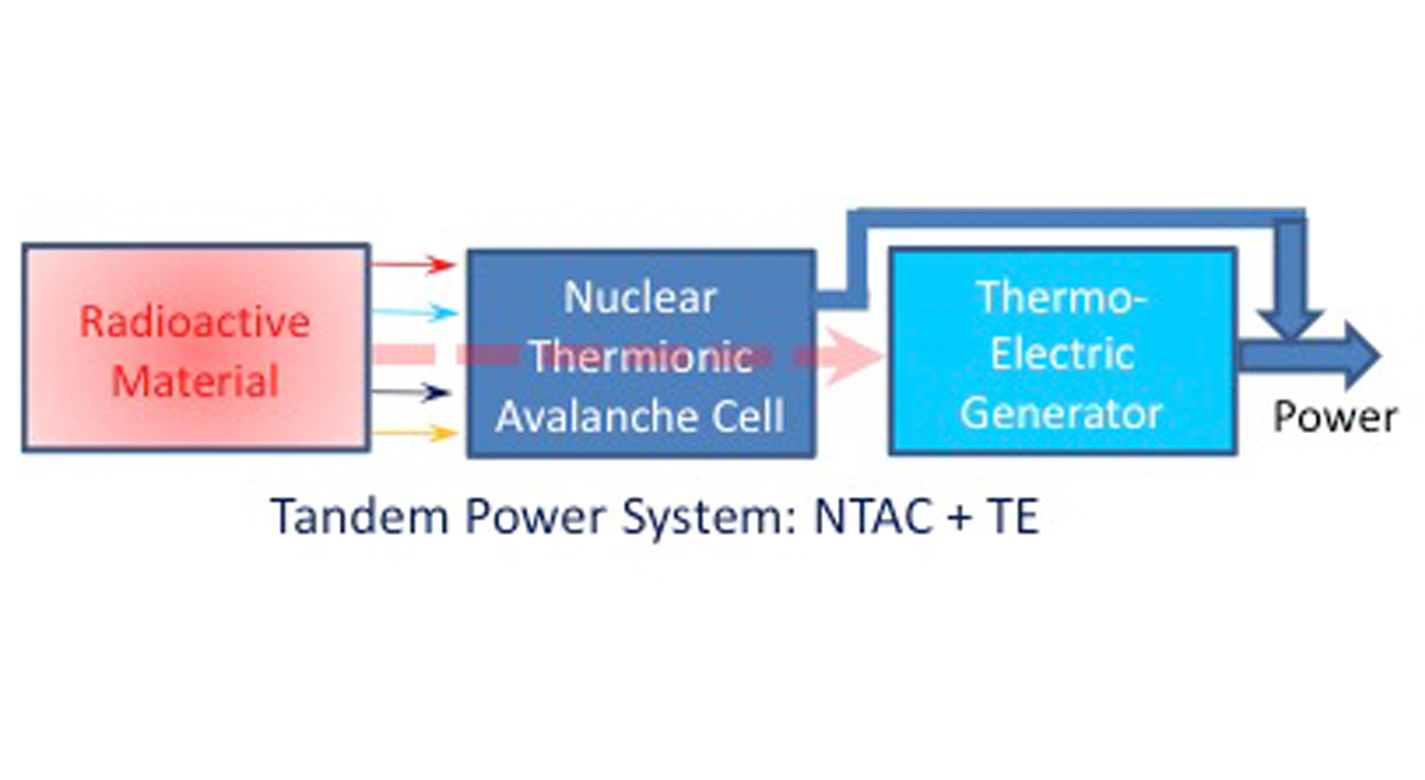Nuclear Thermionic and Thermoelectric Energy System
Power Generation and Storage
Nuclear Thermionic and Thermoelectric Energy System (LAR-TOPS-227)
Alternative method for harnessing nuclear energy
Overview
Nuclear Thermionic Avalanche Cells with Thermoelectric (NTAC-TE) offers direct conversion of energy carried by gamma radiation and beta particles into electricity, as well as direct energy conversion of the heat byproduct without steam driven turbines. This process is considerably more efficient, especially with the addition of Cobalt-60 and sodium-22, than traditional nuclear power generation. In the NTAC-TE system, even the Cesium byproduct of Uranium 235 fission contributes additive energy for more power output.
Upgrading, or using NTAC-TE in conjunction with nuclear power plants increases power derived from the fission process. NTAC-TE cells can also use up all radioactive emission energy from radioactive materials without allowing any radioactive emission from the device.
NTAC-TE can even use existing fission waste as a viable fuel and operate as a safe and mobile remote energy source.
The Technology
The NASA patented NTAC-TE system is a promising technology for power generation from radioactive isotopes that generate gamma rays. This will reduce the mass of unusable radioactive waste products, as NTAC-TE can use what is normally waste and harmful in order to generate electric power.
The patented integration of Cobalt-59 into fission process, which will be transmuted into Co-60, with NTAC-TE elevates the efficiency well beyond current energy harvesting methodologies considering NTAC-TE can also harness energy from Cesium-137. The gamma radiation energies from these three sources combined together are 7 MeV from the prompt fission reaction, 0.6617 MeV from the Cesium by-product of the fission process, and 1.3325 MeV from Cobalt.


Benefits
- Extremely high energy and power density
- Long term operation between "refueling"
- Provides a significant increase to energy conversion rate vs standard fission
- Can utilize nuclear "waste" as fuel
- Does not require a steam turbine or any thermodynamic cycles to convert the heat energy to electrical energy
Applications
- Utility-scale electric power generation facilities
- Electric propulsion for automobiles and airplanes
- Remote stand-alone operations power supply
- Conversion or addition upgrade to nuclear power plants
- Low level localized power supply without transmission infrastructure
Technology Details
Power Generation and Storage
LAR-TOPS-227
LAR-17981-1
LAR-18762-1
LAR-18860-1
LAR-18866-1
LAR-18925-1
LAR-18926-1
LAR-19112-1
LAR-19420-1
LAR-19112-1-CON
LAR-19420-2
LAR-19112-2-CON
LAR-18866-2
Similar Results

Improved Efficiency in Nuclear Propulsion
Current nuclear propulsion technologies do not utilize the additional energy expelled as gamma ray radiation during nuclear fission. This results in the loss of 6.5% of the total fission energy, which could be used to improve propulsion capabilities. The NTAC Augmented Nuclear Electric Propulsion and/or Nuclear Thermal Propulsion design is more efficient than existing technology and captures an additional 6.5% (13.3 MeV) of radiation energy that is currently lost to radiation shielding. In this design the NTAC cell structure surrounds the TRISO (TRi-structural ISOtropic particle fuel) bead-filled rocket chamber, covering all sides and the top of the chamber, therefore capturing additional energy. This structure allows one-way energy flow to then be expelled through the bottom cavity as exhaust gas
This technology is lower weight and less elaborate than current radiation shielded-propulsion systems. Equipping nuclear spacecraft systems with the NTAC Augmented Nuclear Electric Propulsion and/or Nuclear Thermal Propulsion design could reduce travel time to Mars by 50%. It has lower radar signatures compared to solar panels and could be used for systems that need to fly undetected, such as Earth observing satellites. Additionally, it has a lower noise output, which could have applications in reducing noise from submarine and aircraft carrier power systems.

Multi-Layer Nuclear Thermionic Avalanche Cell
The Multi-Layer NTAC is comprised of a gamma-ray source and various layers of emitters, collectors, and insulators. Ideal emitter materials include elements with high atomic numbers, while ideal collector and insulator materials include elements with low atomic numbers. A high-energy gamma-ray (tens of keV to MeV) is used to liberate a large number of intra-band, inner-shell electrons from atoms within the emitter material for power generation through the primary interactions of photoelectric, Compton scattering, photonuclear, and electron/positron pair production processes. Secondary and tertiary electrons are liberated in the avalanche process as well. If a power conversion process effectively utilizes all liberated electrons in an avalanche mode through a power conversion circuit, the power output is drastically increased. Because power conversion is determined by the absorption rate of high energy photons, increasing power output requires either thicker collector material or a sufficient number of layer structures to capture the high energy photons, leaving no liberated electrons escaping (i.e., minimizing the leak of radioactive rays). The selection of materials, the thicknesses of the emitter, collector, and insulator, as well as the number of NTAC layers required are all determined by the energy of photon source. The thermal energy from radioactive decay can also be converted to electricity using a thermoelectric device to further increase power output. The Multi-Layer NTAC technology can be manufactured using existing semiconductor fabrication technology and can be tailored for small-to-large scale power needs, including kilowatt and megawatt applications.

Portable Compact Thermionic Power Cell
This compact thermionic cell (CTI) technology can be manufactured efficiently and economically using existing semiconductor fabrication technology. Its design consists of a top electron collector, separated by a vacuum gap from an electron emitter adjacent to the heat source, a thin plate of 238Pu enclosed by a thin-film insulator to protect the emitter and collector layers from overheating by the 238Pu. For a smart phone battery size, the invented compact thermionic (CTI) cell requires about 5 g maximum of 238Pu. Such small quantities are more readily available and producible, and could be reused for recycling when the CTI cell is dismantled. The emitter surface is topologically modified to have array of spikes, achievable using current semiconductor microfabrication technology. Various other geometries of emitter plates may also be used, such as an array of ridges. The smaller the emitter tips, the higher the voltage concentration.

Ruthenium-Doped Thermoelectric Materials
Solid state power conversion devices, such as thermoelectrics, depend upon temperature gradients for their operation. For example, aeronautic gas turbine engines maintain the necessary temperature gradients throughout their systems due to the enthalpic processes of combustion, which offers the possibility of generating electrical power for use in primary and secondary electrical systems in the aircraft. However, until now thermoelectric materials have not been able to withstand the combination of high temperatures and oxidative environments present in gas turbine engines. Glenn's innovation overcomes these limitations by using a doped oxide pyrochlore (crystal compound) semiconductor as the thermoelectric material. The material has a low thermal conductivity, which allows it to maintain a thermal gradient and sufficient electrical conductivity to produce an electromotive force. The pyrochlore allows the thermoelectric material to be present within a gas turbine engine, converting heat directly into electricity and functioning at high temperatures without oxidizing in air. Glenn's innovative thermoelectric material permits the benefits of solid-state power conversion devices to improve fuel efficiencies for a broader range of applications than has ever been possible. This innovation is in the early stages of development, and Glenn welcomes opportunities for co-development.

Metallic Junction Thermoelectric (MJTE) Generator
The new TE device is fundamentally different from the conventional TE model in terms of high power density TE devices (at least > 30 W/kg) which is at least four times better than the radio-isotope thermoelectric generator (RTG). Innovations include:
•Does not use any junction technology of n-type and p-type which imposes the Brillouin limit due to the anisotropic electron plasma at the interface between n- and p-types.
•Does not manipulate and reduce the thermal conductivity of materials by tweaking morphological order of TE materials, which eventually causes a choking effect on thermal energy input into the system domain.
•Built with thin-film structure. An array structure in plane is fabricated by a simple micro-fabrication process and tied up with another layer built on top of its original layer embodiment as a tandem mode.
The TE device forms a tandem mode of multiple layers of thin-film TE array structure as repeated regenerative cycles to capture and convert more energy for high efficiency operation.



